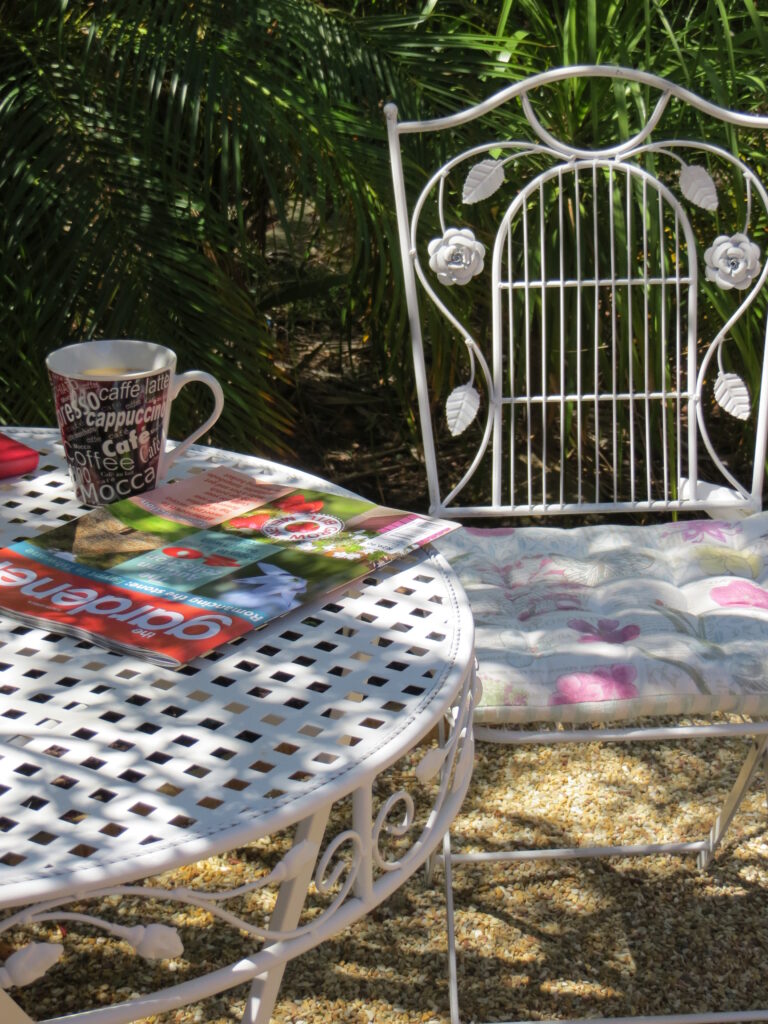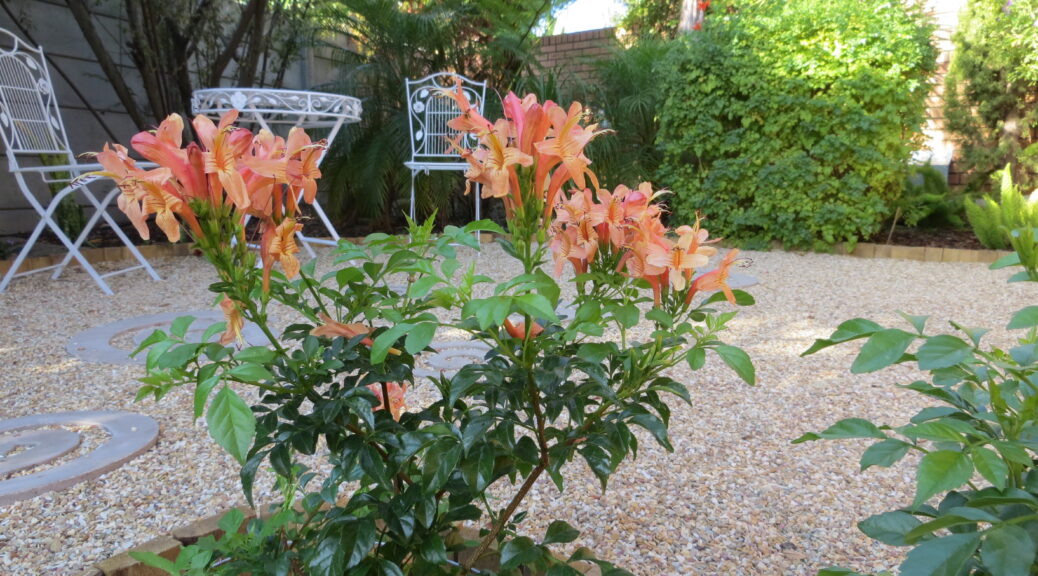
Garden Project #2 – Creating a Contemplative Garden
Everyone needs a spot sheltered from the hustle and bustle of daily life. A peaceful area where you can sit and relax. A secluded place to listen to the sounds of nature while quietly meditating or just day dreaming. Garden project #2 shows how I transformed an unused and rather neglected part of the garden into a space for peaceful reflection – a contemplative garden.
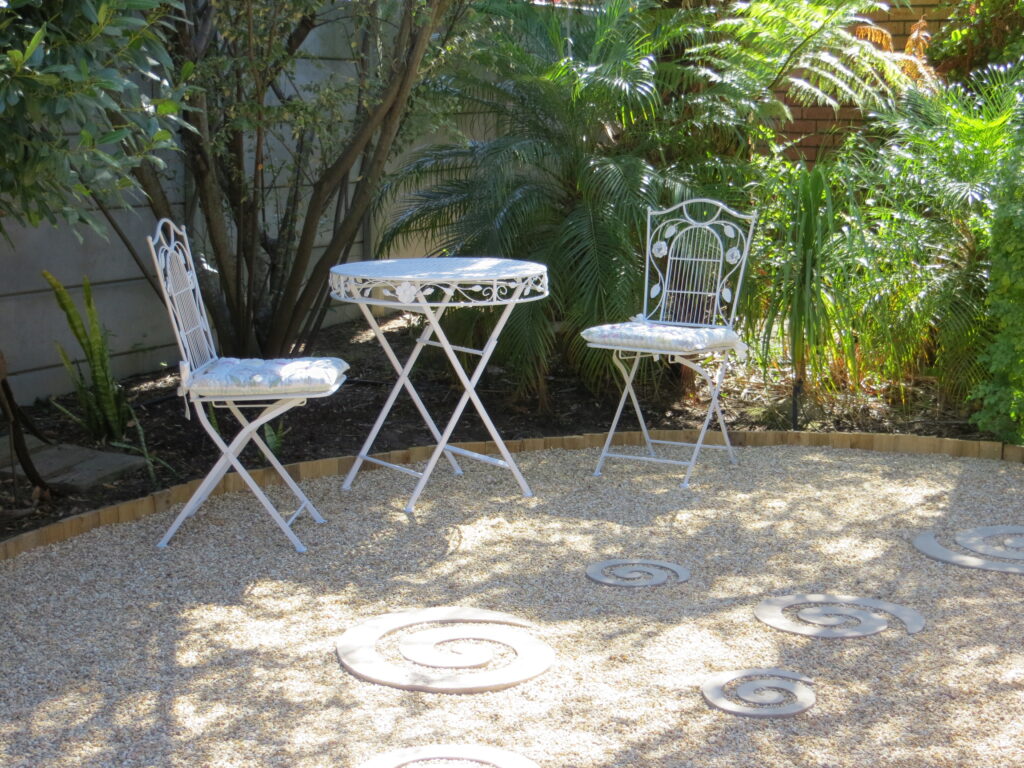
This project was done a few years ago. It was during the time I was coming to grips with my mom’s passing that I decided I needed a tranquil space in the garden.
My first thought was to create a labyrinth. Labyrinths have been used throughout time for mediation and reflection and there is something very relaxing about walking them.
The challenge I faced was the amount of space I had available. The area was L-shaped because of the wood pile. This was the all important braai wood and therefore it was a non-negotiable. It had to stay. This meant the labyrinth would need to be smaller than 3m in diameter. I felt this was just too small and would make the walk too short. Another plan was needed.
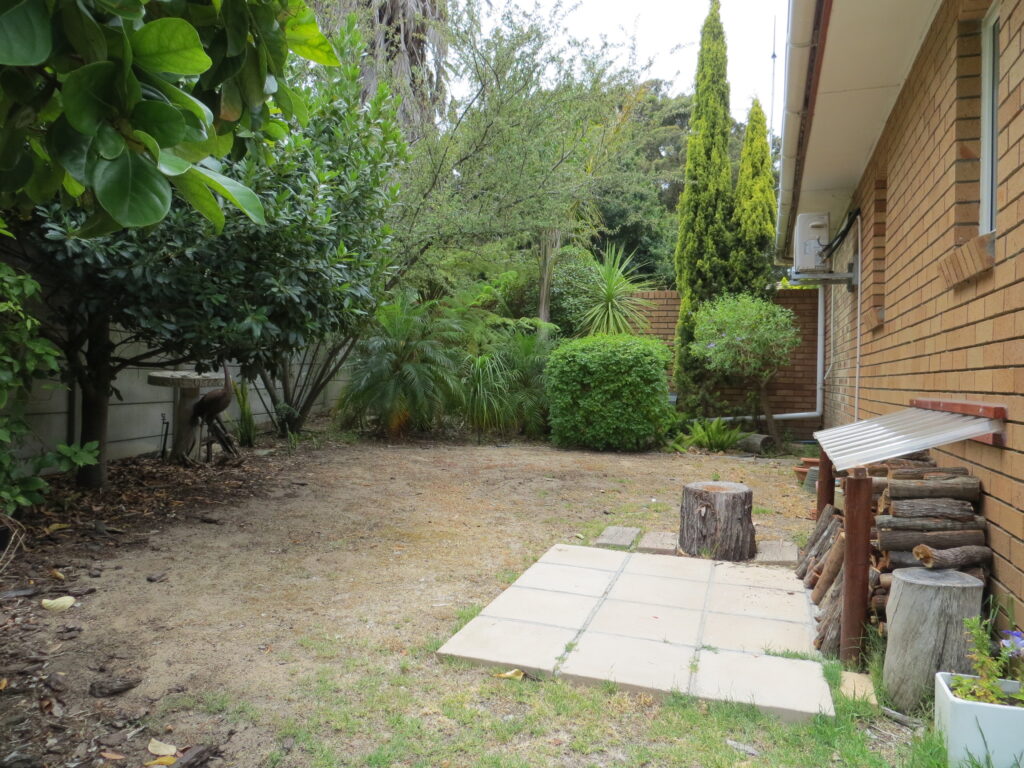
In keeping the circular formation of a labyrinth in mind I settled for decorative cement spirals instead. These were laid in the stones and could be viewed from the seating area under the Cotoneaster tree. The spirals were a DIY project I came across in a gardening magazine and I knew they would be just right for my contemplative garden. I’ll share the details of how to make these cement spirals with you in my next blog. So first back to the contemplative garden design for now.
The supply list
Apart from my garden spade, a rake and a good pair of gardening gloves I also needed edging, weed guard and stones. I don’t receive any endorsements from suppliers but here are their details in any case since this makes sourcing the items needed just so much easier. The wooden edging was from the Pole Yard. I selected the rustic edging as it was the most practical for my project.
The weed guard fabric was from Cape Garden Centre. I found the handy sized rolls to be good value for money. Atlantic Pebbles is my go to supplier for landscaping stones. It was great that they delivered my order because I needed about 75 bags of the 6 mm stone chips.
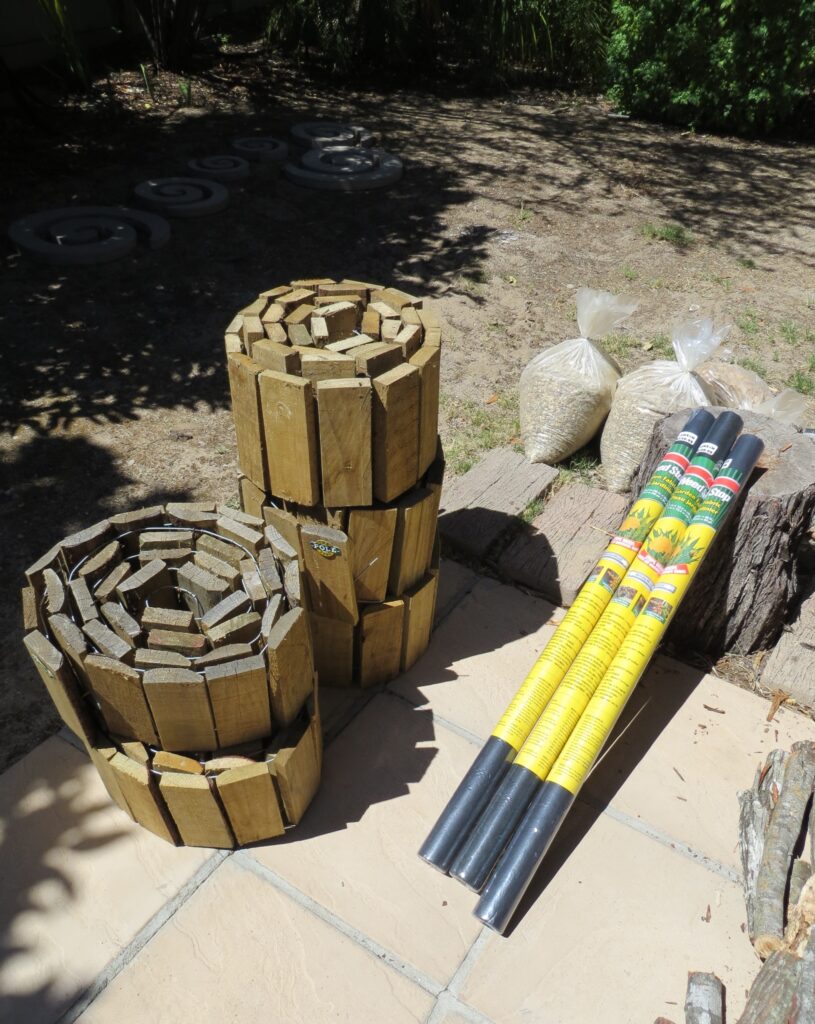
Let’s get started
The first major task was to dig up all the grass roots that were in the ground. This area had been lawn at one stage and although it had previously been removed, the couch grass, or kweek as it is known locally, had started growing again.
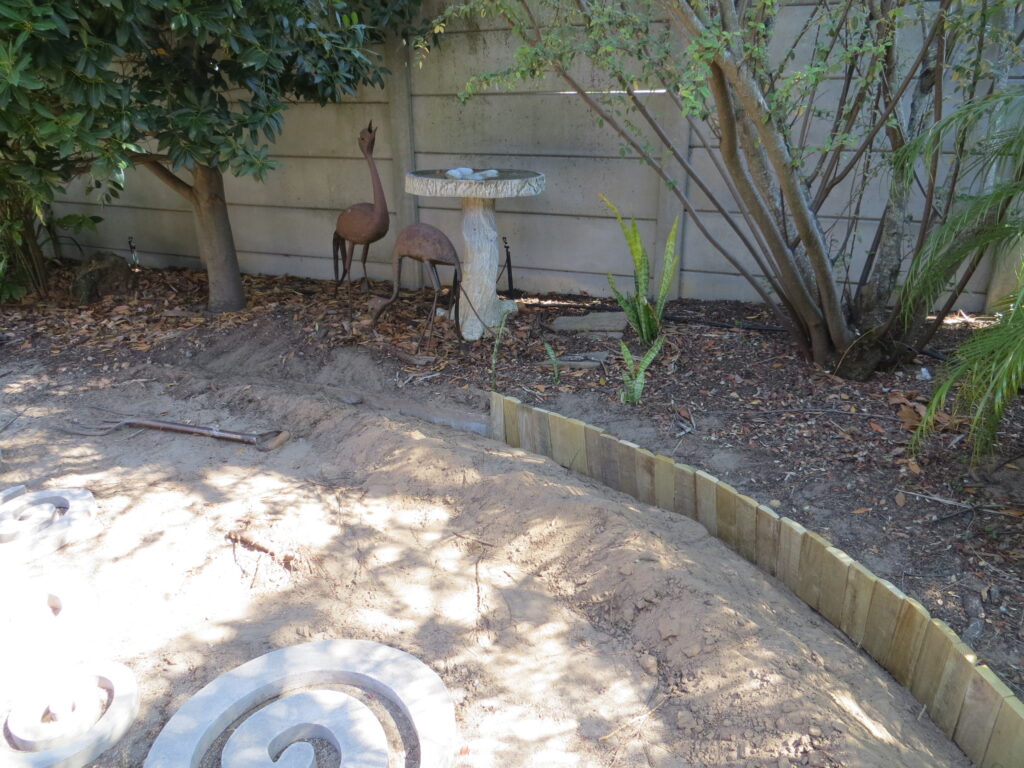
Once that was done the next step was to dig a small trench along the perimeter to lay the wooden edging. Hubby kindly helped with this and we planted the edging to a depth of just over half its height. This would ensure it remained up straight once the stones were pressed up against it.
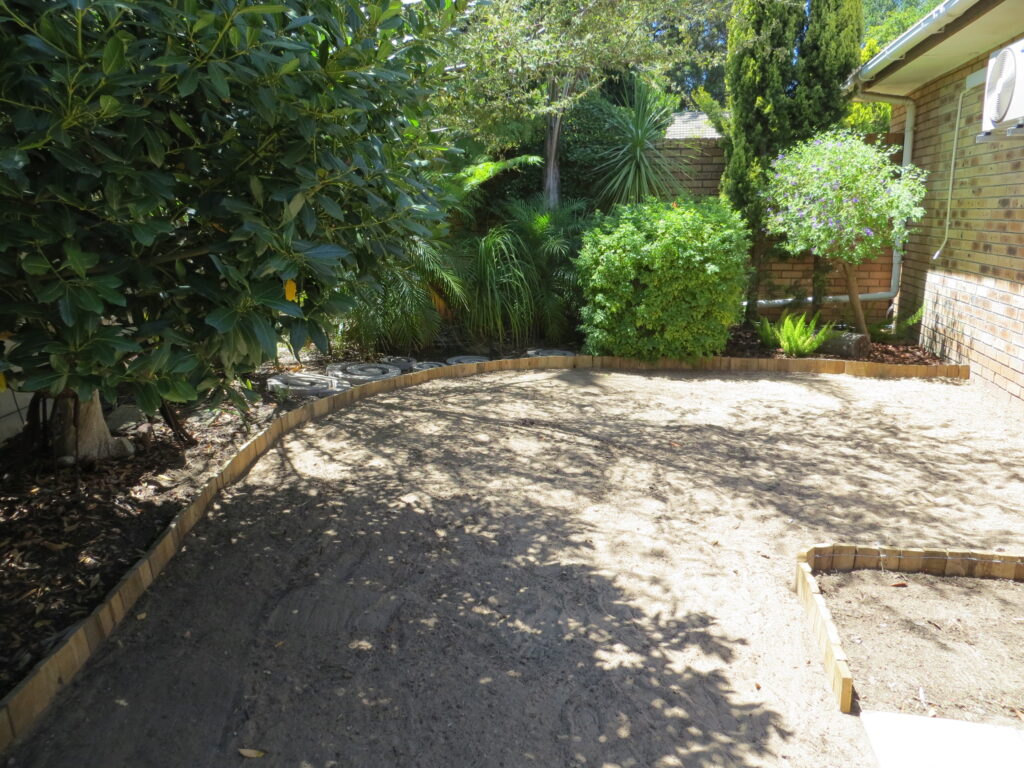
The sand had to be raked and leveled as much as possible before the stones could be put down. The project was starting to take shape. Not bad for a weekend’s work.

Laying the stones
I worked out that we moved at least 1.2 tonnes of stones from where they were neatly stacked by the Atlantic Pebbles delivery team to where we needed them for the contemplative garden around side the house. Thank goodness for a wheelbarrow and a helpful hubby.
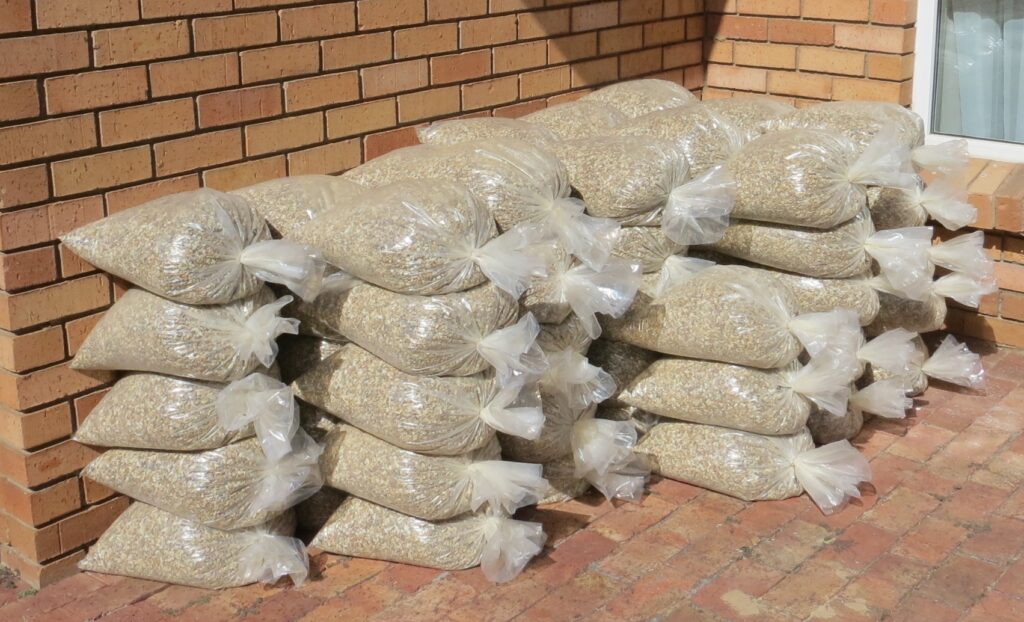
It is highly recommendable to use some sort of sheeting as a weed barrier over the soil when laying stones. It won’t mean that you’ll never have weeds but it does go a long way in preventing them from growing. Some landscapers use thick plastic, however, I prefer working with the fabric weed guard.
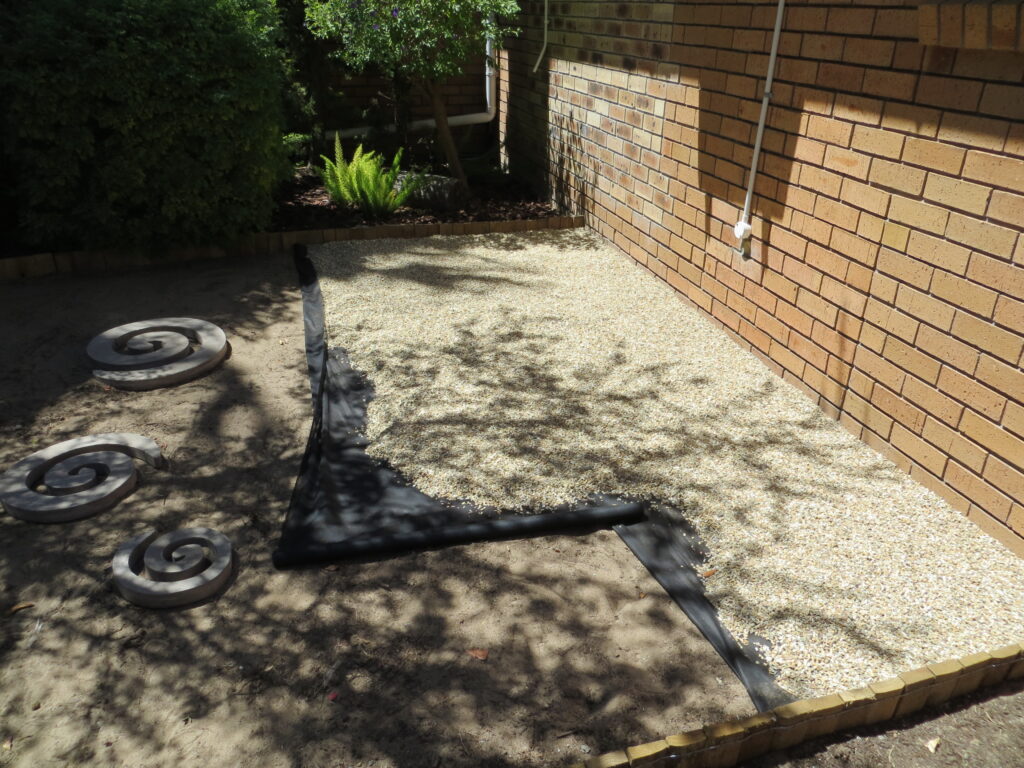
I made sure that each length of weed guard overlapped. This would ensure that there were no gaps through which any hopeful weeds could grow. The first layer of stones was placed on top of the fabric. The stone chips are quite small and although this would not be a high traffic area the aim was to have a total depth of about 4 cm.
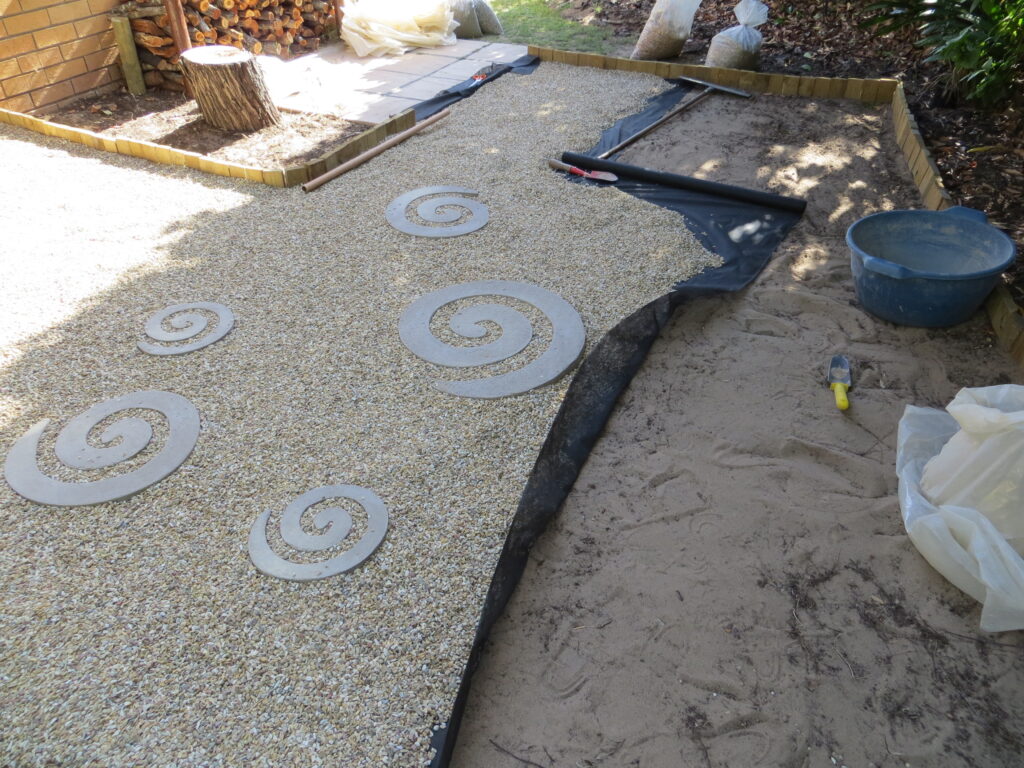
More weed fabric and more stones. The cement spirals were placed in a random pattern and secured within the stone chips.
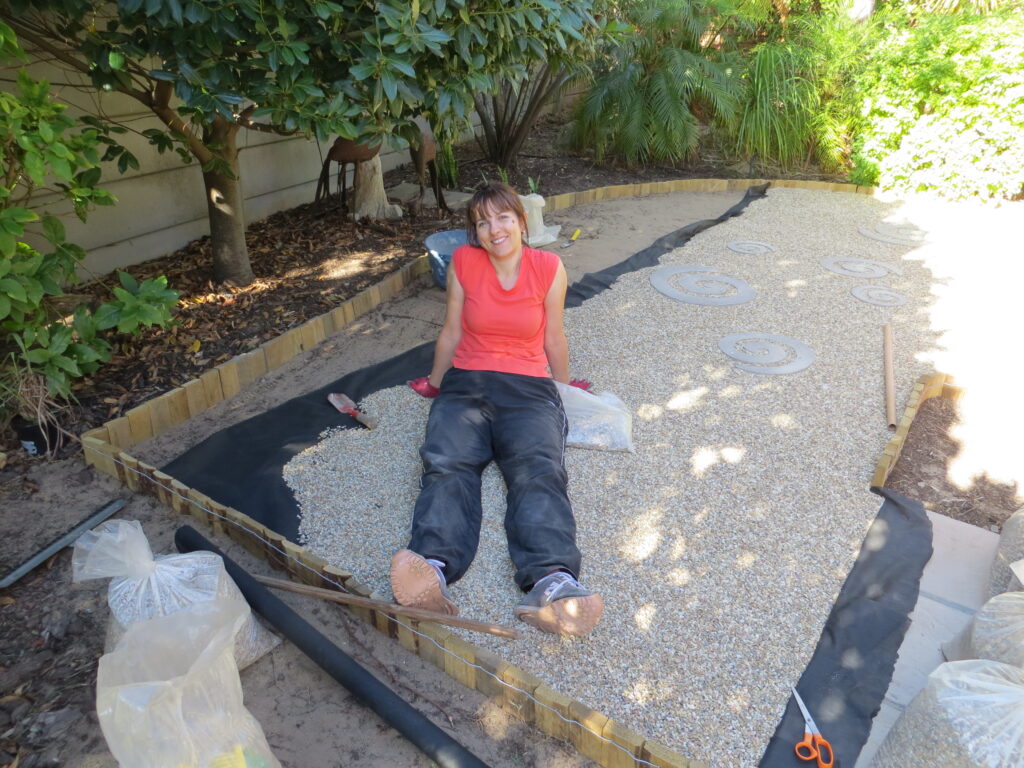
Although this was very physical work, it was so rewarding to see how a plan in my mind was taking shape on the ground.
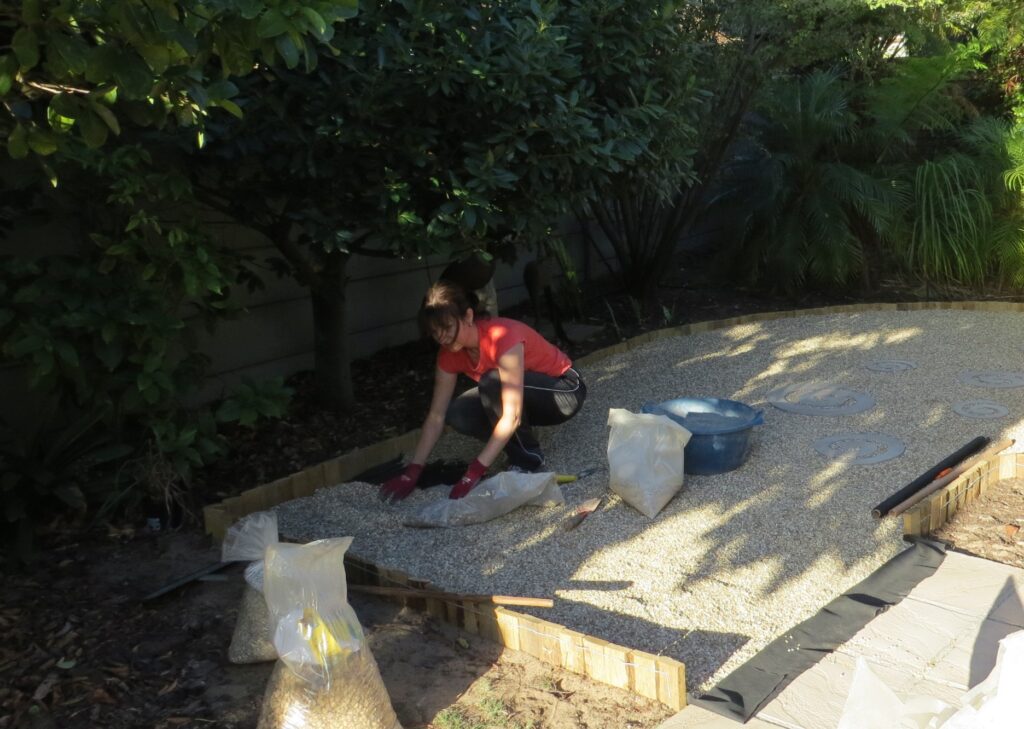
Once all the stones were laid I did a final check to make sure they were even and topped up where needed. I was very happy with the way the spirals had turned out and placed the bistro set of chairs and a table next to them in the shade of the Cotoneaster. I love the overall feeling of calm this once unloved corner now projected.
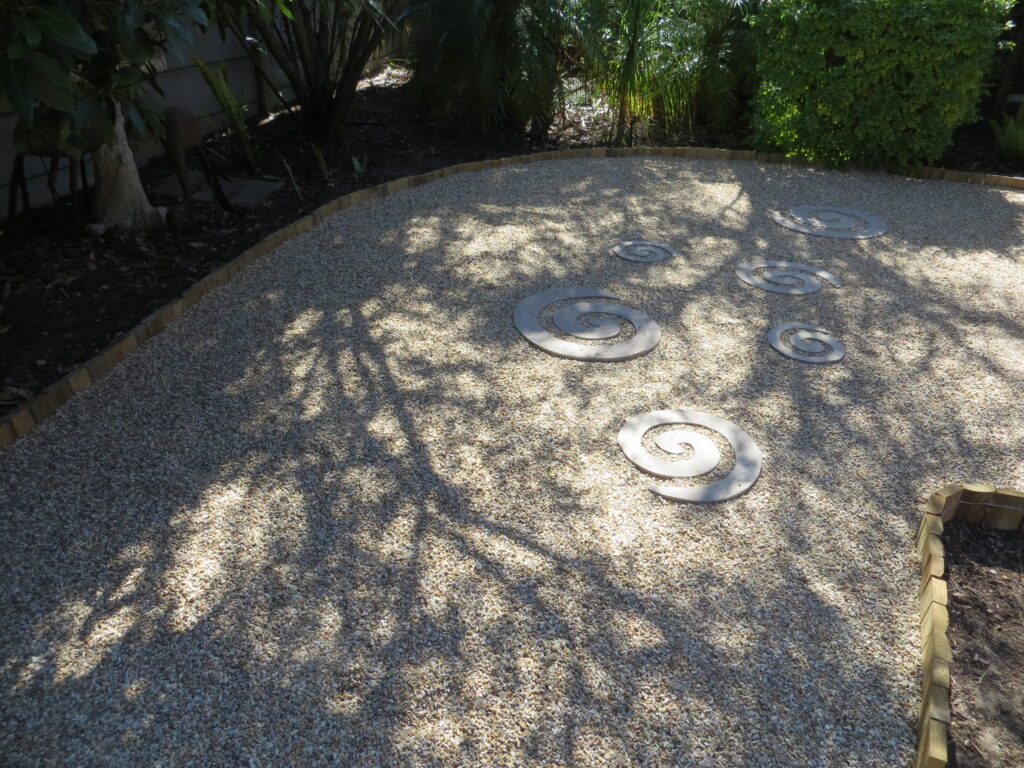
Plants to aid the mood
The color green has healing power and is understood to be the most restful and relaxing color for the human eye to view.
Jennifer Bourn
The plants surrounding my newly landscaped garden are mainly foliage plants of various shades of green and greeny yellow. There are a number of palms such as the mini date palms (Phoenix roebelinii), the ponytail palm (Beaucarnea recurvata) and the Queen palm. The cordyline’s long pointy leaves complement those of the palms.
There is a Coprosma repens ‘variegata’ which has lovely glossy green and yellow leaves. These contrast with the dark green bay leaves on the Laurus nobilis.
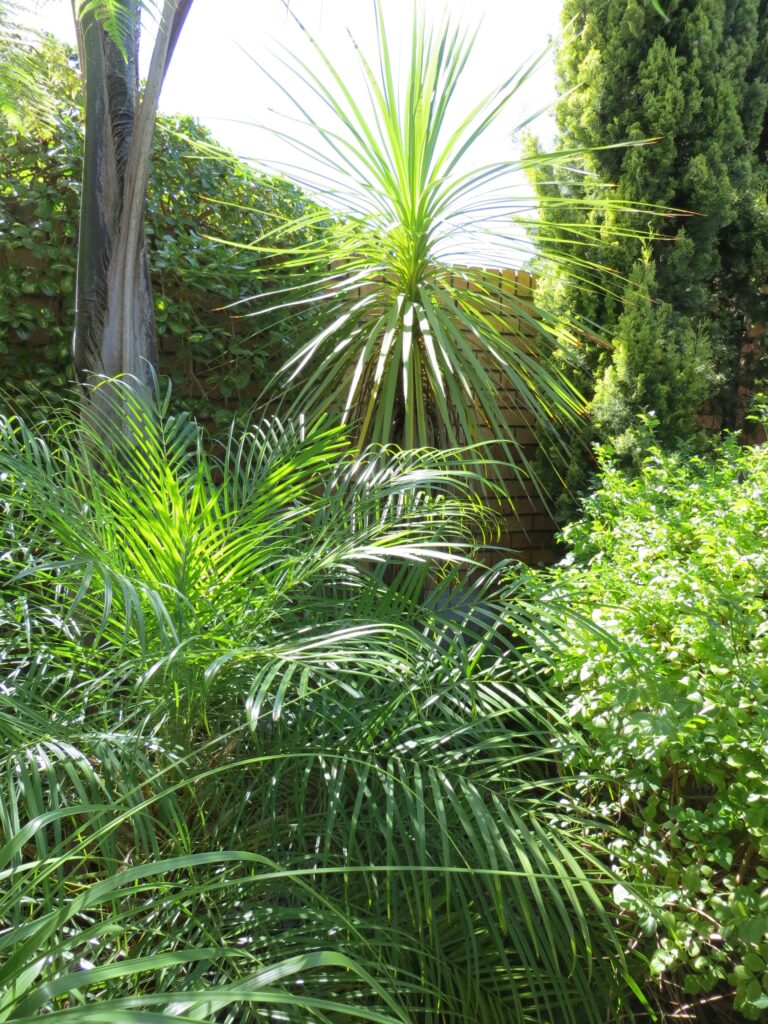
The Cotoneaster adds a splash of colour in autumn with its clusters of small red berries. The mousebirds love the berries and I often spot them hanging in the tree feasting away. Speaking of mousebirds, they also love to eat the leaves on the potato bush (Solanum rantonnetii). I’m quite happy for them to munch on these plants and to rather leave my veggie garden alone as I’ve been told they enjoy eating little sweet red peppers.
I thought I’d add a touch of the orient in my contemplative garden by putting up a bamboo screen. It makes a great backdrop to the conifer Cypressus macrocarpa Goldcrest which I planted in a large bright red pot.
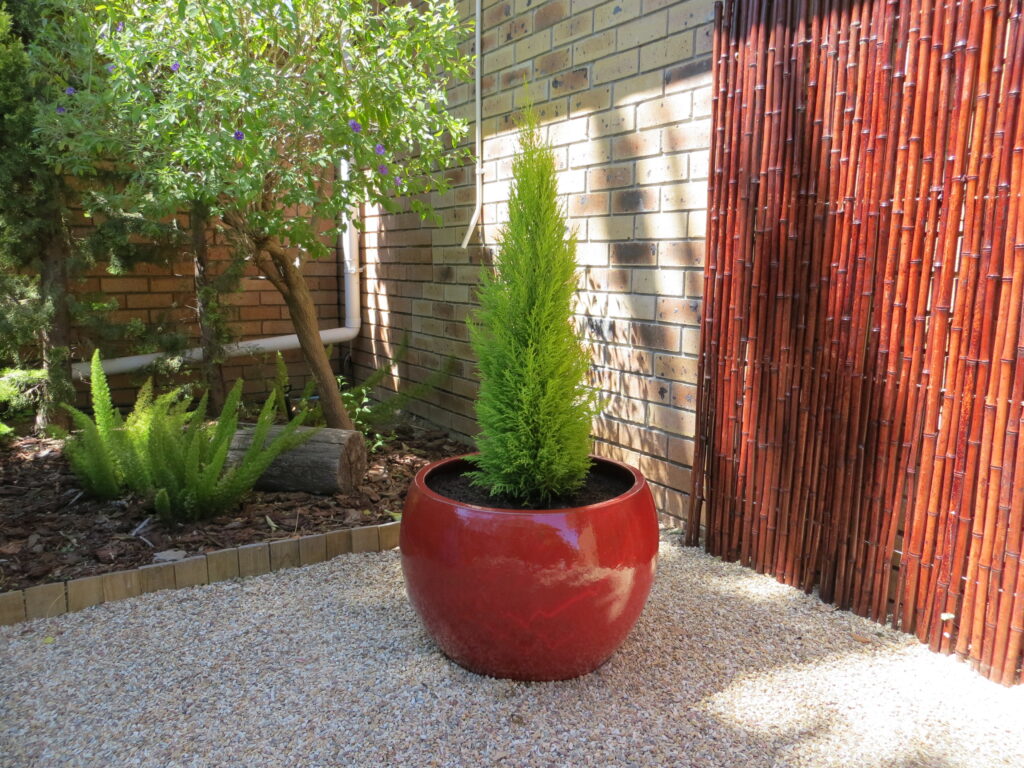
Remember to check back next week to see how to make the cement spirals.
Now all that remains to be done is to sit back, listen to the birds and become still. I hope that you are able to find a quiet area in your garden where you are able to relax and recharge.
